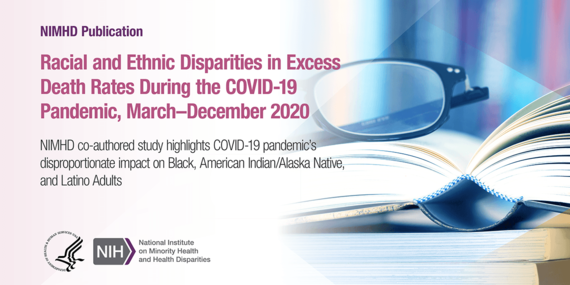NIMHD co-authored study highlights pandemic’s disproportionate impact on Black, American Indian/Alaska Native, and Latino populations
Findings from a large surveillance study showed that the COVID-19 pandemic has taken a disproportionate toll on Black, American Indian/Alaska Native, and Latino individuals in the United States, causing more deaths by population size, both directly and indirectly, compared with White or Asian individuals. The findings from the study have been published in the Annals of Internal Medicine.
Led by the National Cancer Institute with support from the National Institute on Minority Health and Health Disparities (NIMHD), and the Pacific Institute for Research and Evaluation, scientists used provisional death certificate data from the Centers for Disease Control and Prevention, along with population estimates from the U.S. Census Bureau, to compare excess deaths by race/ethnicity, sex, age group, and cause of death during March to December 2020 with data for the same months in 2019. Excess deaths are the number of deaths in a specific period of time over what would have been expected to occur based on deaths in the same months in previous years, after adjustment for population changes.
Roughly 2.9 million people died in the United States between March 1, 2020, and December 31, 2020. Compared with the same period in 2019, there were 477,200 excess deaths, with 74% of them due to COVID-19. The scientists found that, after adjusting for age, the number of excess deaths by population size among Black, American Indian/Alaska Native, and Latino men and women were two to three times higher than in White and Asian men and women.
The study was co-authored by NIMHD’s Director, Dr. Eliseo Pérez-Stable and Scientific Director, Dr. Anna Nápoles.

|